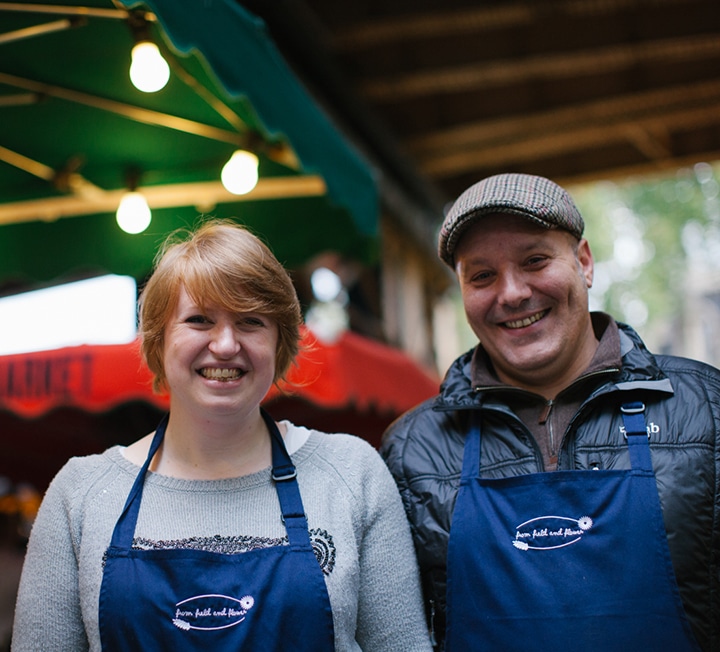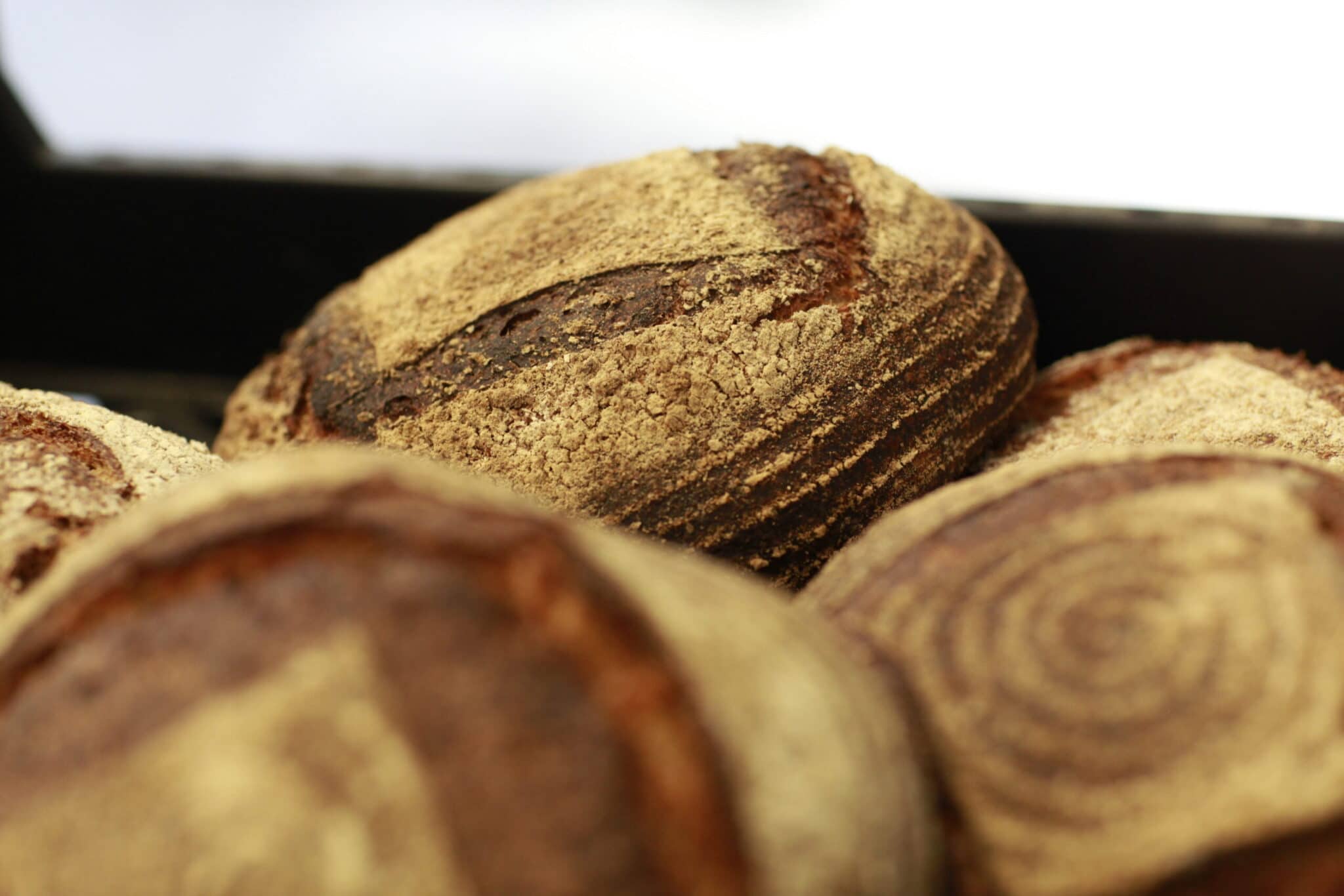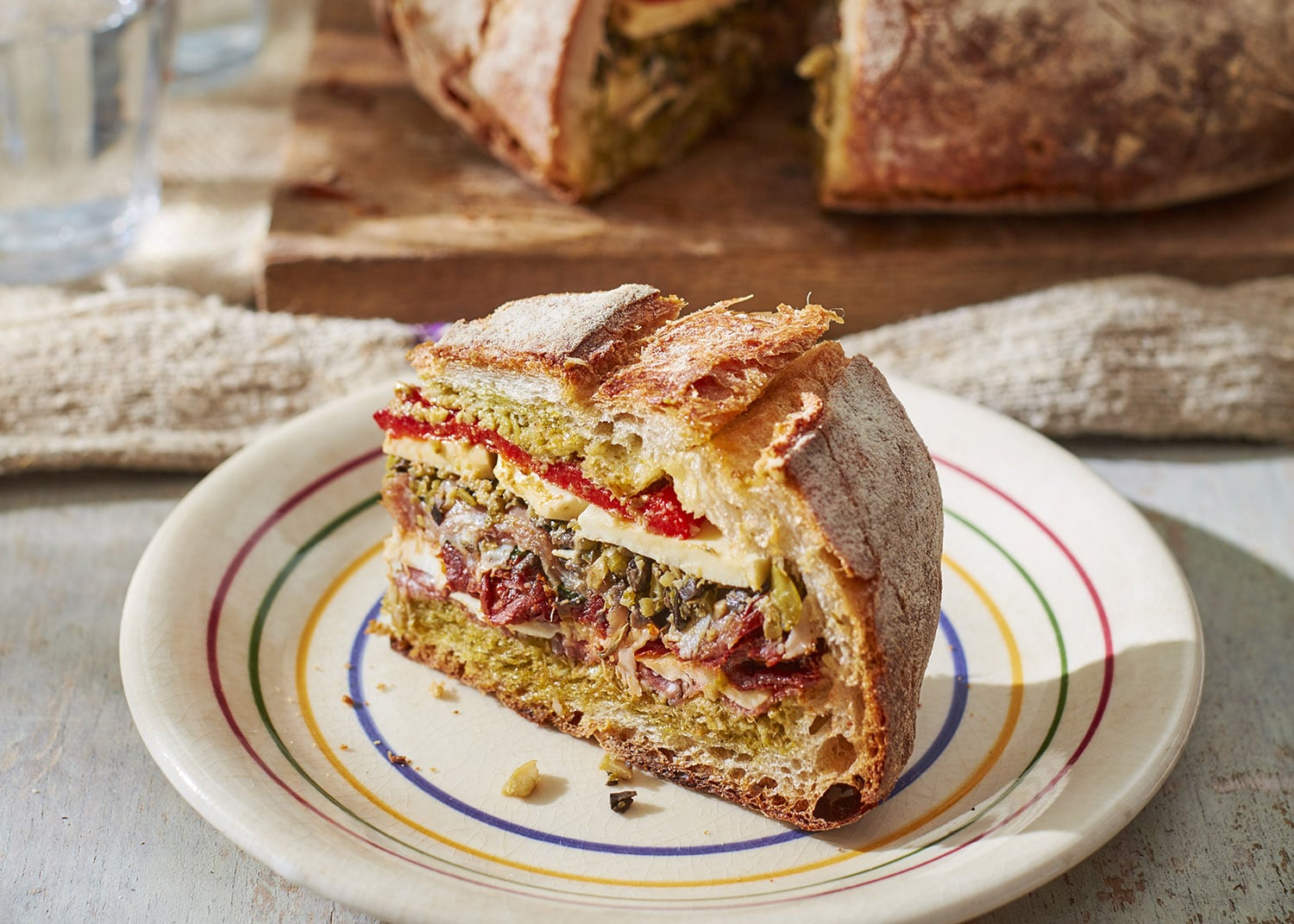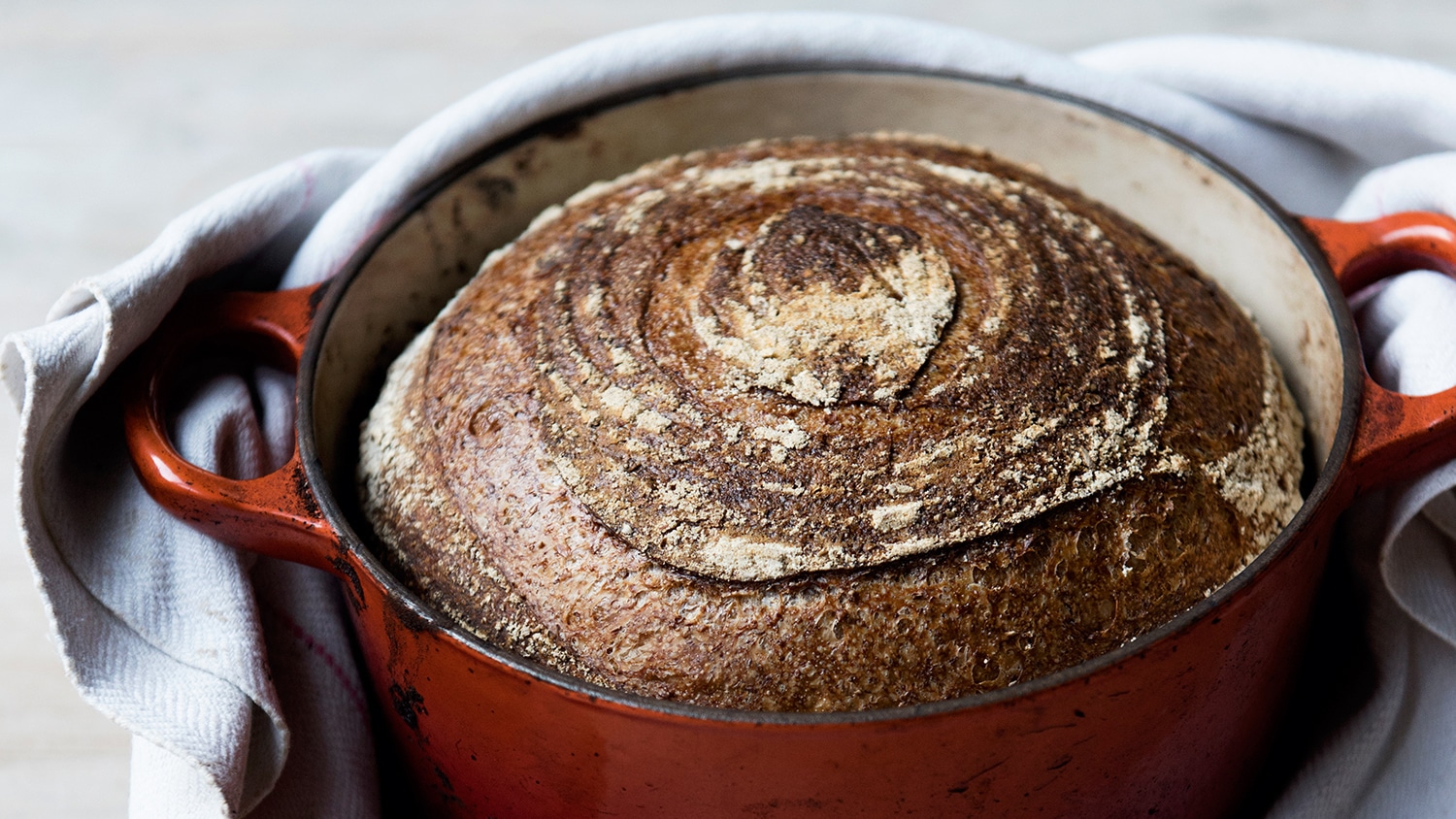Sourdough starter
The senior sous chef at River Cottage shares his recipe for a natural sourdough starter
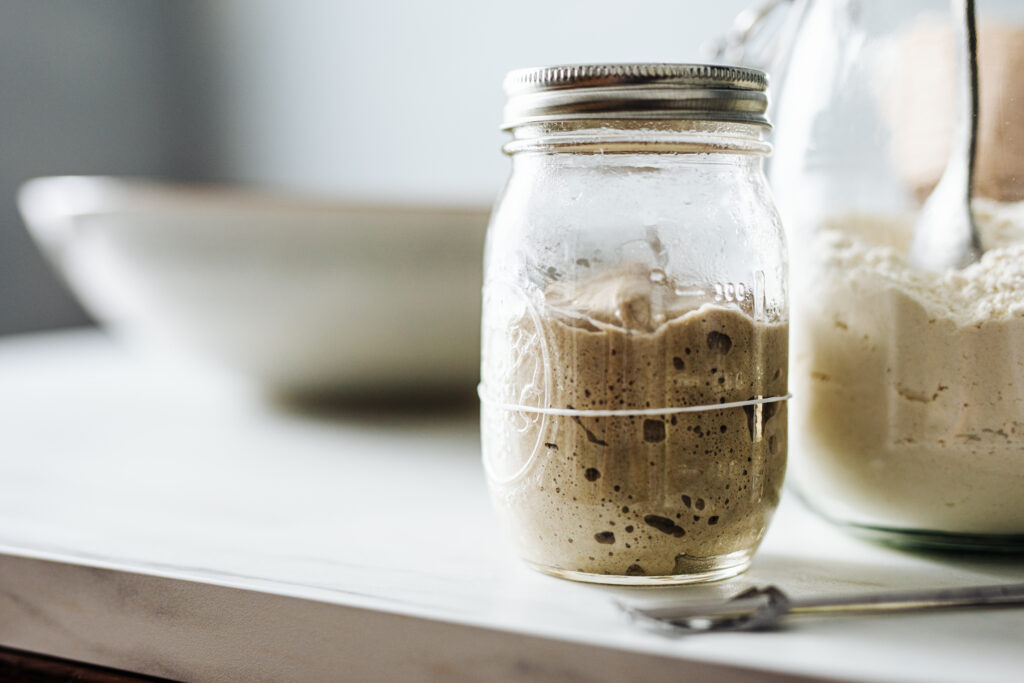

Recipe Meta
Prep
6 days
Cook
N/A
Serves
Makes 2 loaves
Difficulty
Easy
Ingredients
- 50g strong organic stoneground flour, it can be white, wholemeal, spelt or rye (plus 200g for feeding)
- 50g (ml) water (if you have hard water consider using bottled or filtered water to avoid the chlorine)
Method
Day 1: To start the whole thing off, place the flour and water into a bowl/jar/plastic container of your choice and mix together really well to form a loose mixture. Cover your container with a cloth and leave out at a warm room temperature for 24 hours.
Days 2-5: Now repeat this process around the same time every day until day 5, feeding 50g of flour and 50g of water each time and stirring it well.
During those five days, the wild yeast bacteria will slowly multiply within the starter. They will be fermenting on the natural sugars in the flour and after a couple of days will show some signs of fermentation. First there will be a couple of small bubbles and after that a quite rough aroma will develop. This smell will develop and improve with time (trust me) so please don’t throw it out now.
Carry on feeding every day until day 5, then leave it for another 24hours.
Day 6: By now you have 500g of bubbly starter. You have established the culture, you should be proud. The starter will be quite acidic, so now we need to give it a refreshment to increase the strength of the yeasts.
To do this, discard about 90 per cent of the starter you have in the jar, you want about 1 tbsp left (I make sourdough pancakes with the discarded starter). This may seem wasteful, but is a necessary sacrifice for a well risen loaf.
I’m going to suppose that you would like to make 2 loaves, so now we’ll feed the starter 150g flour and 150g water giving us a total of 300g, plus our tbsp starter that we already had in the jar.
After about 6-12 hours it’ll bubble up, be fully active, smell fruity and taste sweet with a mild acidity. A good test for activity is that the starter floats on water. It will also rise up, especially if you keep the starter in a jar. Now is the time to mix your dough.
After mixing the dough, you will be left the same small amount in the container that you started out with (about 1 tbsp). To keep this going for your next bake, you have two options: either feed again and start baking another loaf, or simply add enough flour and water so they come halfway up the jar/container, mix well and store in the fridge until you would like to bake next time.
The future
Your sourdough culture will work at its best when it is used regularly. It will rise in a predictable amount of time and raise loaf after loaf without difficulty. However, there are times when we need to leave our starter for longer in the fridge without feeding. They are in general incredibly resilient, especially the older they get.
You will be able to leave your starter in the fridge for about 2 weeks without feeding, sometimes even a little longer. If the starter has been unused for this long it is wise and prudent to give at least two feeds (discarding 90 per cent between them) before baking with it again. The difference in the end loaf is definitely worth it.
The best option is to feed your starter at least once if not twice a week, even if you are not baking with it. If you keep your starter in a medium jar then you won’t be throwing away very much each time (or eating pancakes) and ideally, you’ll be baking lots of sourdough so there really won’t be much waste at all.
A note on inactivity
Very occasionally, after 5 days initial feeding there’s very little life in your infant culture. It can be worthwhile carrying on the feeding programme for another 5 days. After day 5, tip away all but about 50g of the starter then start to add 50g of flour and 50g water every day for another 5 days. After the further 5 days, there should hopefully be some more definite signs of fermentation. Carry on the process then from day 6 in the above method.
Back up
If disaster strikes and you have a dead starter on your hands, it can be a good idea to have a back up stashed away somewhere. A lot of bakers have a small amount well wrapped in the freezer for the fateful day. Another good option is to spread the love and give some away to family and friends who may be interested in making wonderful sourdough too. Thirdly you can also dry the starter on a piece of paper and keep it in an envelope, ready to be called upon and rehydrated in the hour of need. You will of course have to give these a few good feeds to get them fighting fit again, but it will hopefully prove useful.
I wish you many happy years of baking with your starter – like any culture, it will get better with age.
